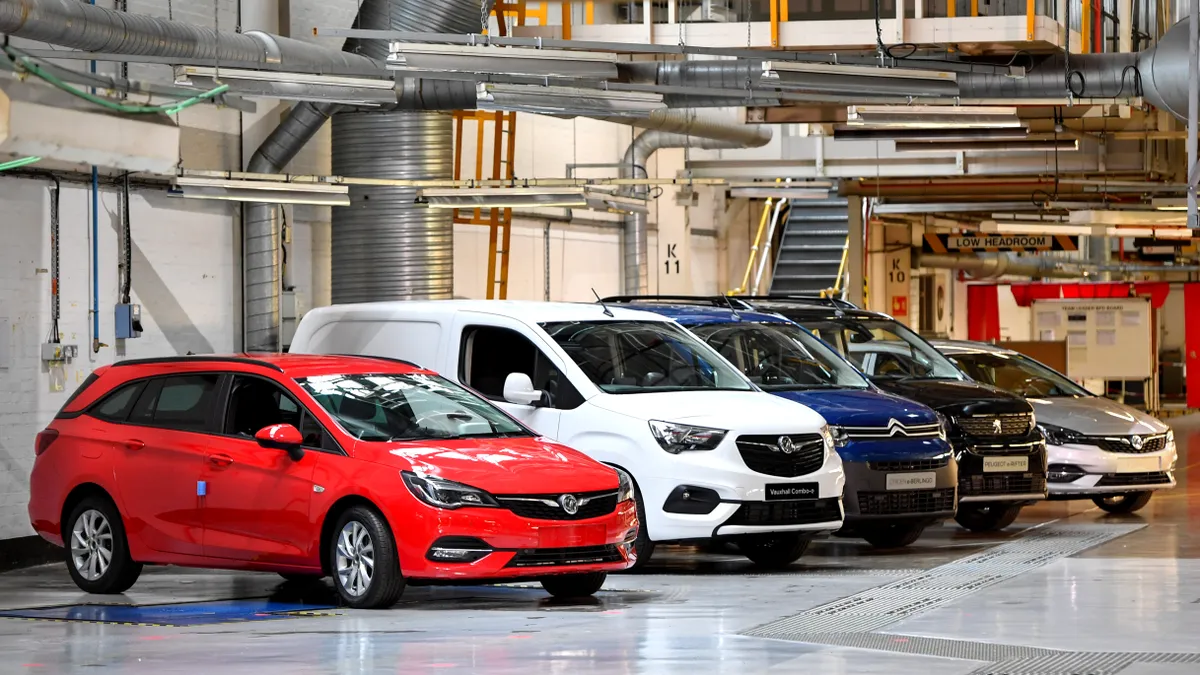UPDATE: May 6, 2022: The California Public Utilities Commission on Thursday approved three vehicle-grid integration pilots, estimated to cost $11.7 million, for Pacific Gas & Electric Co. The programs will help the utility support electric vehicle deployment and bidirectional charging equipment — technology that regulators say will help provide backup power, build resiliency, and lower the cost of EV ownership.
"The programs advance the exploration of the integration of electric vehicles into the grid in a cost-effective manner to improve how and when customers use electricity in innovative ways," CPUC President Alice Busching Reynolds said in a statement.
Dive Brief:
- California regulators are considering three vehicle-grid integration (VGI) pilots proposed last year by Pacific Gas & Electric (PG&E), which would collectively cost $11.7 million.
- The pilots include a vehicle-to-grid residential program, a vehicle-to-grid commercial program, as well as a vehicle-to-microgrid program that could help power California communities during wildfire-related power outages.
- VGI pilots are an important piece of the puzzle in advancing bidirectional charging technologies, said Zach Woogen, policy specialist with the Vehicle-Grid Integration Council. Experimenting with program incentives and rate designs "will definitely be very helpful in figuring out how to scale and expand the programs," he added.
Dive Insight:
In 2019, California lawmakers passed Senate Bill 676, legislation that required the state’s Public Utilities Commission to establish strategies and metrics for integrating electric vehicles into the grid. The commission in turn approved a decision at the end of 2020 that, among other things, authorized the state’s investor-owned utilities to propose VGI pilots.
Last July, PG&E filed a proposal with the CPUC for four pilot programs. The first, a three-year residential pilot, would focus on helping 1,000 single-family residential customers with EVs adopt bidirectional charging technologies for $7.5 million. The second proposed pilot had a similar focus but was designed for fleets of medium and heavy-duty EVs that charge at commercial buildings. The utility outlined plans to sign up more than 200 bidirectional medium and heavy-duty vehicles as part of the second pilot with a budget of $2.7 million.
PG&E also pitched a plan for a $1.5 million pilot to address wildfire-related public safety power shutoffs in California. The utility proposed to have as many as 200 residential and commercial EVs that could charge and discharge in a multi-customer microgrid, along with solar power, to power communities during the outages.
The commission’s draft resolution, currently scheduled for a vote on April 7, would approve three of the four pilots that PG&E has proposed. Regulators noted that if successful, they would address several broader policy goals – offer technology for backup power and defer distribution upgrades, for example. Regulators, however, have outlined a few proposed modifications to PG&E’s original plan, including requiring PG&E to justify or reduce the customer enrolment budget for the commercial fleets pilot.
The draft resolution would also deny funding for the fourth pilot proposed by PG&E, a $2.3 million effort to explore the value of EV power exports in the California Independent System Operator market services, in part because the utility has not justified the proposed budget for the pilot. However, the draft resolution would allow PG&E to file another advice letter with the commission within 60 days of its approval to address the issue.
The Vehicle-Grid Integration Council estimates that there is a total technical potential of about 5,000 MW in instantaneous load that could theoretically be used for "V1G" – or a unidirectional response to price signals, like a time-of-use rate or demand response program – in California today, according to Woogen. When it comes to "V2G," or bidirectional capabilities, the state could see 469 MW of total technical potential just considering Nissan LEAF vehicles that are on the road today, he added. At a 5% participation rate, that offers 23 MW of potential net peak contributions.
Bidirectional charging capabilities can provide EV customers with new sources of revenue as well as value, for instance as backup power, Woogen said. The most costly component to get these benefits is the battery – "and in a sense, that’s already bought and paid for as a means of mobility. As a customer, you’re able to leverage an embedded cost and unlock latent battery capacity to squeeze additional value out of your fleet or your vehicle, if you would like to," he added.
"As electric vehicle adoption continues to grow, bidirectional charging technology has huge potential for supporting our customers and the electric grid broadly," PG&E spokesperson Ari Vanrenen said in an emailed statement.













